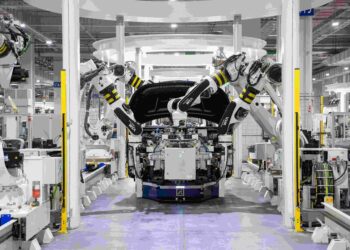Jaguar, a renowned British luxury car manufacturer, has a rich history and a distinctive brand identity that have significantly influenced the automotive industry. Understanding Jaguar’s history and current ownership is crucial for several reasons, including brand perception, market positioning, and future direction. This article explores why Jaguar’s storied past and present ownership matter to consumers, enthusiasts, and the broader automotive market.
A Legacy of Excellence and Innovation
Historical Significance
Jaguar’s history dates back to 1922 when it was founded as the Swallow Sidecar Company by Sir William Lyons and William Walmsley. The company initially produced motorcycle sidecars before transitioning to automobiles. Over the decades, Jaguar has been synonymous with innovation, elegance, and performance.
- Iconic Models: Jaguar has produced some of the most iconic cars in automotive history, such as the Jaguar XK120, E-Type, and the XJ series. These models not only set new standards for design and engineering but also cemented Jaguar’s reputation as a leader in luxury and performance.
- Racing Heritage: Jaguar’s success in motorsports, including multiple victories at the 24 Hours of Le Mans in the 1950s, showcased the brand’s engineering prowess and competitive spirit. This racing heritage continues to influence Jaguar’s modern performance-oriented vehicles.
Influence on Automotive Design
Jaguar’s commitment to design excellence has left an indelible mark on the automotive industry. The sleek lines, sophisticated styling, and attention to detail characteristic of Jaguar cars have inspired countless designers and automakers.
- Design Philosophy: Jaguar’s design philosophy, often encapsulated in the phrase “Grace, Space, Pace,” emphasizes a harmonious blend of aesthetics, comfort, and performance. This holistic approach to car design has set a benchmark for luxury vehicles.
- Cultural Impact: Jaguar cars have been featured prominently in popular culture, including films, television shows, and literature. This cultural presence has helped solidify Jaguar’s status as an aspirational brand.
Current Ownership and Its Implications
Tata Motors Acquisition
In 2008, Tata Motors, an Indian multinational automotive manufacturing company, acquired Jaguar along with Land Rover from Ford Motor Company. The formation of Jaguar Land Rover (JLR) under Tata’s ownership marked a significant turning point for the brand.
- Financial Stability: Tata Motors provided the financial backing necessary to revitalize Jaguar and invest in new technologies and models. This support has been crucial in maintaining Jaguar’s competitiveness in the luxury car market.
- Strategic Direction: Tata Motors’ strategic vision for JLR has focused on expanding the brand’s global presence, enhancing product quality, and incorporating advanced technologies. This direction has helped Jaguar navigate the challenges of the modern automotive landscape.
Technological Advancements
Under Tata Motors’ ownership, Jaguar has made significant strides in technological innovation. The brand has embraced advancements in electric vehicles, connectivity, and autonomous driving technologies.
- Electric Vehicles: The introduction of the Jaguar I-PACE, the brand’s first all-electric SUV, demonstrates Jaguar’s commitment to sustainability and future mobility solutions. The I-PACE has received critical acclaim for its design, performance, and environmental credentials.
- Connected Cars: Jaguar has integrated advanced infotainment systems and connectivity features into its vehicles, enhancing the driving experience and meeting the demands of tech-savvy consumers.
Brand Perception and Consumer Trust
Continuity and Evolution
Jaguar’s ability to maintain its core values while evolving with changing market demands is key to its enduring appeal. The brand’s rich history combined with its forward-looking approach under Tata Motors’ stewardship has reinforced consumer trust and loyalty.
- Heritage and Modernity: Jaguar strikes a balance between honoring its heritage and embracing modern innovations. This duality appeals to a broad spectrum of customers, from traditional luxury car buyers to younger, tech-oriented consumers.
- Consistent Quality: Tata Motors’ investment in manufacturing processes and quality control has ensured that Jaguar continues to produce high-quality vehicles. This consistency is vital for maintaining consumer confidence in the brand.
Market Positioning
Jaguar’s history and current ownership play a critical role in its market positioning. As a brand with a storied past and a commitment to innovation, Jaguar occupies a unique space in the luxury automotive market.
- Luxury and Performance: Jaguar’s emphasis on luxury and performance distinguishes it from competitors. The brand’s vehicles are often seen as offering a unique blend of style, comfort, and driving dynamics.
- Global Expansion: Tata Motors’ global reach has enabled Jaguar to expand its presence in key markets, including China and the United States. This expansion is essential for sustaining growth and competitiveness.
Future Prospects
Commitment to Sustainability
Jaguar’s future prospects are closely tied to its commitment to sustainability. The automotive industry is undergoing a transformative shift towards electric and hybrid vehicles, and Jaguar is positioning itself as a leader in this transition.
- Electrification Strategy: Jaguar has announced plans to become an all-electric brand by 2025. This ambitious goal reflects the brand’s dedication to environmental responsibility and innovation.
- Sustainable Practices: Beyond electrification, Jaguar is exploring sustainable manufacturing practices and materials to reduce its environmental footprint.
Innovation and Adaptation
Jaguar’s ability to innovate and adapt to emerging trends will determine its success in the coming years. The brand’s focus on cutting-edge technology, autonomous driving, and connectivity will shape its future offerings.
- Technological Integration: Jaguar’s integration of advanced technologies into its vehicles will enhance safety, convenience, and the overall driving experience. These innovations are critical for staying competitive in the luxury car market.
- Customer-Centric Approach: By listening to customer feedback and anticipating market trends, Jaguar can continue to meet the evolving needs and preferences of its clientele.
Conclusion
Jaguar’s history and current ownership are integral to understanding the brand’s identity, market position, and future direction. The legacy of excellence, innovation, and cultural impact established over decades has shaped Jaguar into a symbol of luxury and performance. Under Tata Motors’ ownership, Jaguar has revitalized its brand, embraced technological advancements, and committed to sustainability, ensuring its continued relevance and success in the global automotive market. For consumers and enthusiasts, Jaguar’s rich history and strategic evolution under current ownership underscore the brand’s enduring appeal and promise for the future.














